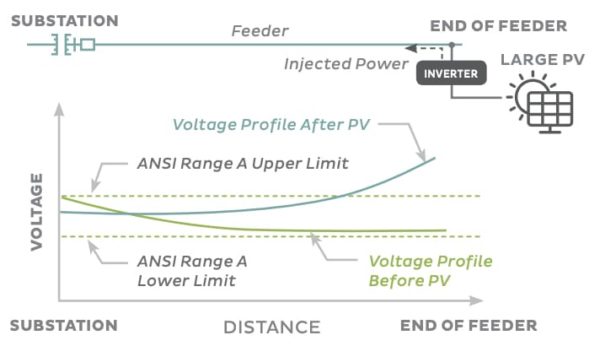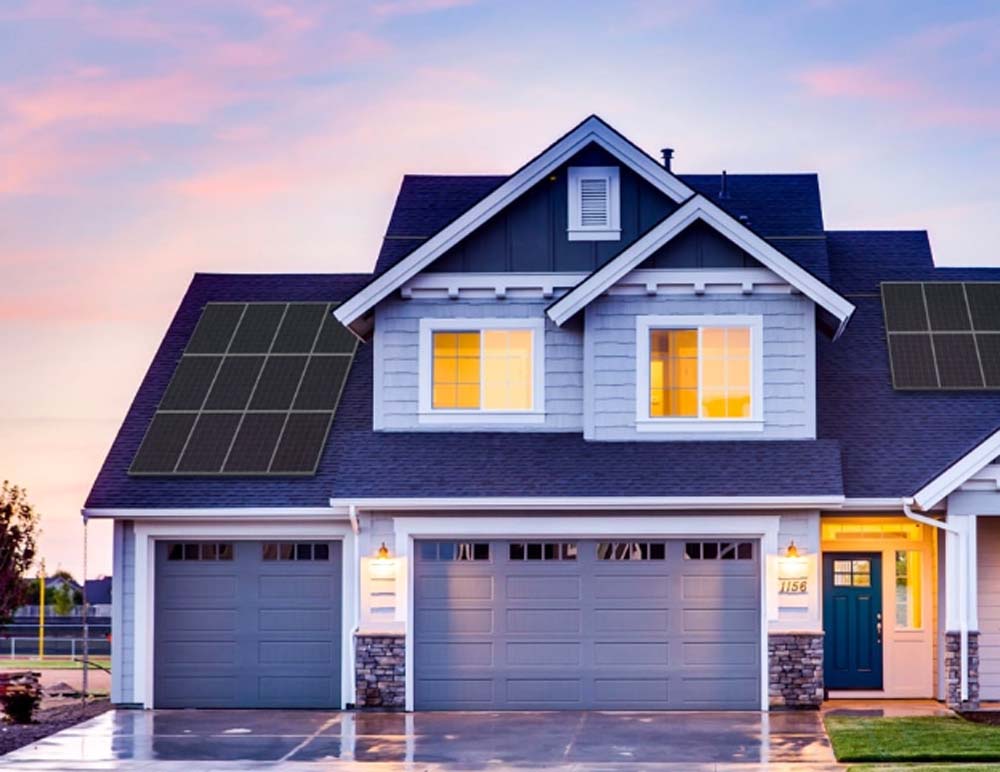“Shortcuts” that utilities use to model interconnection of residential solar contribute to interconnection delays and low adoption rates, said a report from the National Renewable Energy Laboratory (NREL).
Some utilities fast-track residential solar applications only if solar capacity is less than 15% of the distribution circuit’s peak load, the report said.
Other utilities screen by assuming that residential customers are directly connected to service transformers. As a result, rather than allowing their distribution model to estimate voltage changes that would result from adding residential solar, these utilities “commonly assume” during screening that residential solar would cause “2-3 volts of rise, which can incorrectly suggest that a voltage violation will happen,” said an NREL spokesperson.
Researchers from NREL and three other organizations attempted to develop an improved screening technique with better shortcuts, based on “synthetic” models of distribution circuits, but concluded that the effort would require better data on distribution circuits in order to succeed.
Utilities use the shortcuts to help avoid voltage violations and thermal overload on a distribution circuit, the report said. Voltage violations are illustrated in the nearby image. Thermal overload, which can cause utility equipment to fail, could result if the power exports from solar and solar-plus-battery systems are too large, said an NREL spokesperson.

Smart inverters, DERMS
Voltage on distribution circuits can be maintained within proper limits when residential solar projects use smart inverters. That’s because smart inverters have autonomous settings that can instantly correct for voltage disturbances.
Three of the nine utilities participating in the NREL study said they rely primarily on smart inverters with autonomous inverter settings to integrate residential solar and other distributed resources. Smart inverter requirements have been in place in Hawaii and California for three years, while other states have since set such requirements or are considering doing so. A Sunrun executive has recommended that other states follow Hawaii’s example, where harmonized smart inverter settings have expedited interconnection.
Three utilities participating in the study said they primarily rely on “traditional” upgrades to integrate distributed resources, such as replacing distribution circuit lines with higher-capacity lines, a practice known as reconductoring.
A distributed energy resource management system (DERMS), which gives the utility control over distributed resources, is the favored tool to integrate distributed resources for two of the nine participating utilities. Customer net-load control is the primary choice for the remaining utility.
Among participating utilities, the top three strategies to integrate distributed resources over the next ten years will include DERMS for six utilities, smart inverters with autonomous inverter settings for five utilities, and traditional upgrades for five utilities. Only two of the nine participating utilities were identified.
The study is titled “Final technical report: Improving solar and solar+storage screening techniques to reduce utility interconnection time and costs.” The report’s authors work at NREL, Kevala, National Information Solutions Cooperative, and Electrical Distribution Design.
This content is protected by copyright and may not be reused. If you want to cooperate with us and would like to reuse some of our content, please contact: editors@pv-magazine.com.








By submitting this form you agree to pv magazine using your data for the purposes of publishing your comment.
Your personal data will only be disclosed or otherwise transmitted to third parties for the purposes of spam filtering or if this is necessary for technical maintenance of the website. Any other transfer to third parties will not take place unless this is justified on the basis of applicable data protection regulations or if pv magazine is legally obliged to do so.
You may revoke this consent at any time with effect for the future, in which case your personal data will be deleted immediately. Otherwise, your data will be deleted if pv magazine has processed your request or the purpose of data storage is fulfilled.
Further information on data privacy can be found in our Data Protection Policy.